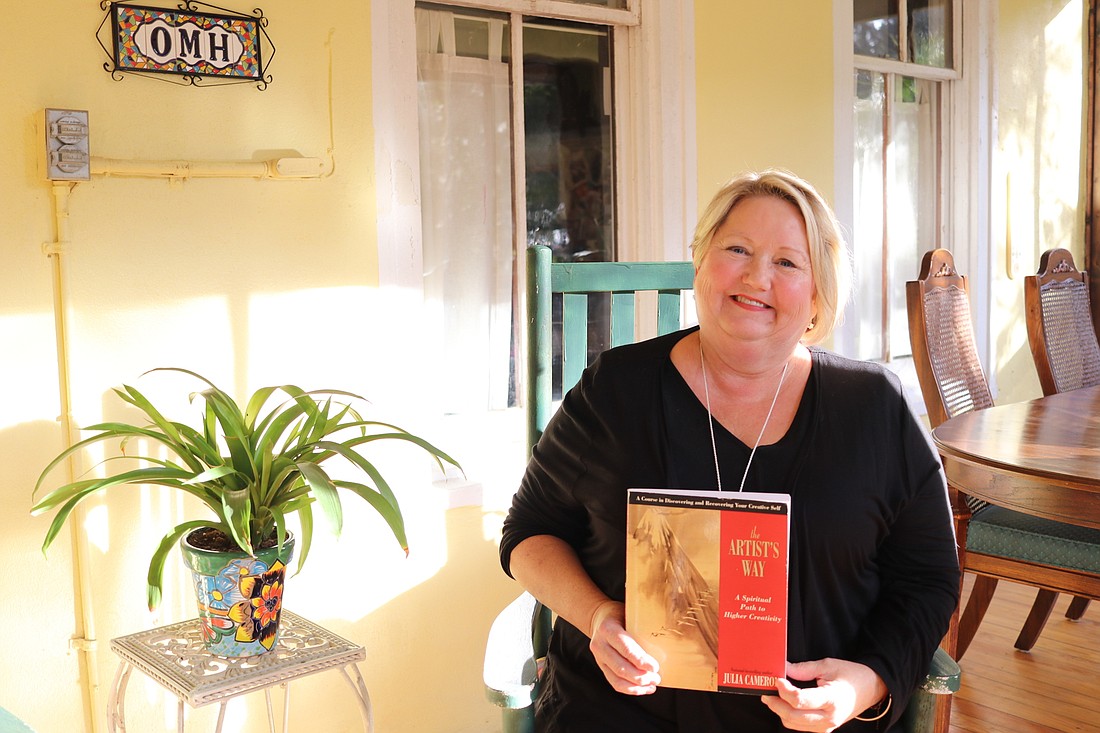- January 1, 2025
-
-
Loading

Loading

Creativity can take many forms depending on who is expressing it.
For Joy Wolff, creativity takes the forms of painting, drawing, gardening, writing and playing piano — to name a few. Every now and then, Wolff, like other artists, hits a creative rut. When that happens, she turns to some exercises she learned from a book revered among many artists and creative types: “The Artist’s Way” by Julia Cameron.
For those currently stuck in a creative rut, Wolff will be leading a 12-week study of “The Artist’s Way” beginning 7 p.m. Monday, Jan. 28, at the Oakland Manor House, 620 N. Tubb St., Oakland. The study is limited to 12 people, and those interested in attending can call the Oakland Manor House to sign up. The first session is free, and sessions are held on a weekly basis. Cost is $79 for those interested in continuing the 12-week study.
“‘The Artist’s Way’ by Julia Cameron is a 25-year-old classic that’s for creativity,” Wolff said. “It’s not just for artists. It’s for anybody who wants to be creative.”
Wolff is a veteran psychiatric nurse with a background in group dynamics. She’s also a longtime fan of “The Artist’s Way” and has been practicing some of the lessons in the book for about 20 years. With her professional background and love of the book, it seemed like a natural fit that she led a group study.
“I just feel comfortable with groups and have been in a few groups myself,” Wolff said. “(This book study) is a discussion group with application. We’re meeting every week to check in and commit together to encourage each other with no judgment, no criticism.”
The book contains a variety of lessons, exercises, activities and “homework assignments” to inspire creativity. Readers are encouraged to write journal entries, create and recite daily affirmations or mantras, explore nature, step out of their comfort zones and take themselves out on “artist’s dates” alone, among other lessons and activities. The group will discuss different topics each week, Wolff said.
“There’s an ‘artist’s date’ that you’re supposed to do every week, which is by yourself, to go out and be inspired by nature, art museums or whatever floats your boat,” Wolf said.
She added that it’s important that the “artist’s dates” are done alone “because so much of our society is we’re constantly barraged with other people and stimulation from screens.”
“It’s really about putting yourself first,” she said. “The homework is that you write three free-form pages every morning. It’s called a ‘brain dump.’ … It helps you (to) allow the creative process to jump in.”
Wolff added that individuals can write about whatever they want on the free-form pages and said the point of the “homework assignment” is to get participants to express themselves on paper — whether someone is a writer or not.
“(You can write) whatever comes in your head,” Wolff said. “It can be your grocery list, it can be something you’re angry about, it can be anything. But basically, the discipline is you’re writing three pages. … Everybody does their homework, (and then) we come back in (each week) and we talk about the different (chapters).”
Writing daily “brain dumps” is just one of the activities in “The Artist’s Way.” Other activities include role playing, acting out small plays, writing exercises and more. The book contains a wide variety of exercises and lessons, but they all serve the same goal — inspiring creativity.
“The whole process is to start practicing your art on a regular basis and hone it and get good at it and keep working with it,” Wolff said. “With creative work, you can run into resistance. (The study) is also meant to help people that are (creatively) blocked to get through that blockage. … Really, the whole idea is just to kind of get us a little bit out of our comfort zones because the whole concept of creativity is you just kind of have to get out of your head. ”